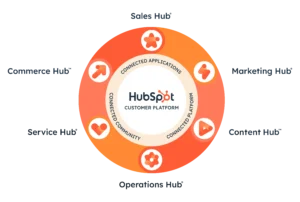Natural Language Processing (NLP) is the backbone of applications that interact with, analyze, or generate human language. Here’s a look at some of the basic applications of NLP, how they work, and the benefits they offer.
1. Text Classification
How It Works: Text classification involves categorizing text into predefined classes. Machine learning models are trained on labeled data to classify text based on language patterns, using algorithms like Naive Bayes, Support Vector Machines (SVM), or deep learning models.
Benefits:
- Speeds up sorting of information, such as categorizing emails as spam or non-spam.
- Helps automate feedback sorting for quicker customer service insights.
2. Sentiment Analysis
How It Works: Sentiment analysis detects the emotional tone (positive, negative, neutral) within a body of text. Algorithms analyze words and phrases in context, often using pre-trained models to understand sentiment scores.
Benefits:
- Provides brands with insights into customer emotions about products or services.
- Enhances social media monitoring to track public opinion and brand reputation.
3. Chatbots and Virtual Assistants
How It Works: Chatbots use NLP models to process and respond to user inputs. These models use techniques like intent recognition to understand what the user is asking and generate appropriate responses.
Benefits:
- Offers 24/7 customer support without requiring human agents for every query.
- Helps businesses handle more inquiries while reducing operational costs.
4. Machine Translation
How It Works: Translation models convert text from one language to another by analyzing patterns and structures in massive multilingual datasets. Transformer models, like Google’s BERT or OpenAI’s GPT, handle language nuances and deliver more accurate translations.
Benefits:
- Facilitates cross-language communication for individuals and businesses.
- Supports international operations, making websites, documents, and products accessible globally.
5. Speech Recognition
How It Works: Speech recognition converts spoken language into text. This is done using algorithms that process audio waveforms, matching them to known phonemes and words. NLP techniques help interpret the meaning of spoken text.
Benefits:
- Allows hands-free interactions, useful in scenarios like virtual assistants and transcription services.
- Enhances accessibility for users with disabilities and improves user experience across devices.
6. Named Entity Recognition (NER)
How It Works: NER identifies and classifies entities like names, dates, and places within a text. Models are trained on labeled data to learn entity types and associations, helping to pull out important information from large documents.
Benefits:
- Assists in data extraction for industries like finance and healthcare, pulling out key details quickly.
- Speeds up information retrieval from lengthy documents.
7. Summarization
How It Works: Summarization models distill lengthy content into concise summaries, either by extracting key sentences or generating new sentences that capture the main ideas. NLP models can summarize documents or articles by identifying the most relevant portions.
Benefits:
- Saves time for users by providing quick summaries of long texts.
- Enhances productivity by enabling users to focus only on the most critical information.
Conclusion
NLP applications are transforming industries by making human language processing more accessible and efficient. From text classification to machine translation, NLP enables faster insights, better customer service, and smoother communication across languages, making it a key technology in today’s digital landscape.




